#EIGHTY EIGHT. AND THATS A CONSERVATIVE ESTIMATE
Explore tagged Tumblr posts
Text
Decade
Project: Decade. #Decade
In the mid-1820s, Nicéphore Niépce first managed to fix an image that was captured with a camera, but at least eight hours or even several days of exposure in the camera were required and the earliest results were very crude.
The First Cameras
“The basic concept of photography has been around since about the 5th century B.C.E. It wasn't until an Iraqi scientist developed something called the camera obscura in the 11th century that the art was born.
Even then, the camera did not actually record images, it simply projected them onto another surface. The images were also upside down, though they could be traced to create accurate drawings of real objects such as buildings.
The first camera obscura used a pinhole in a tent to project an image from outside the tent into the darkened area. It was not until the 17th century that the camera obscura became small enough to be portable. Basic lenses to focus the light were also introduced around this time.
The First Permanent Images
Photography, as we know it today, began in the late 1830s in France. Joseph Nicéphore Niépce used a portable camera obscura to expose a pewter plate coated with bitumen to light. This is the first recorded image that did not fade quickly.
Niépce's success led to a number of other experiments and photography progressed very rapidly. Daguerreotypes, emulsion plates, and wet plates were developed almost simultaneously in the mid- to late-1800s.”
Source: https://www.thesprucecrafts.com/brief-history-of-photography-2688527
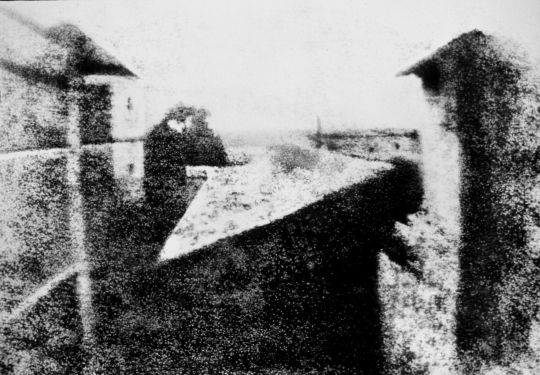
Retouched version of the earliest surviving camera photograph, 1826 or 1827, known as View from the Window at Le Gras
Photography has long been influenced by painting and art.
“The relationship between painting and photography has extended the possibilities of image creation. When photography appeared on the scene, it was supposed to herald the democratization of portraiture (among other genres, like landscapes and still-lifes). Photography gave painting the freedom it needed to burst into the rich fountain of expression it is today. There are many classic and modern painters whom, thanks to their skills with lighting and conceptualization, can serve as valuable guides for today's photographers.”
Johannes Vermeer (1632 – 1675)
Source:https://www.lightstalking.com/8-painters-real-effect-todays-photography-photographers-influenced/
My Decade to research – the 1980’s
Timeline of 1980’s Events
Overview:
“The decade was great socioeconomic change due to advances in technology and a worldwide move away from planned economies and towards laissez-faire capitalism.
As economic deconstruction increased in the developed world, multiple multinational corporations associated with the manufacturing industry relocated into Thailand, Mexico, South Korea, Taiwan, and China. Japan and West Germany saw large economic growth during this decade. The AIDS epidemic became recognized in the 1980s and has since killed an estimated 39 million people (as of 2013).[1] Global warming became well known to the scientific and political community in the 1980s.
The United Kingdom and the United States moved closer to supply-side economic policies beginning a trend towards global instability of international trade that would pick up more steam in the following decade as the fall of the USSR made right wing economic policy more powerful.
The final decade of the Cold War opened with the US-Soviet confrontation continuing largely without any interruption. Superpower tensions escalated rapidly as President Reagan scrapped the policy of détente and adopted a new, much more aggressive stance on the Soviet Union. The world came perilously close to nuclear war for the first time since the Cuban Missile Crisis 20 years earlier, but the second half of the decade saw a dramatic easing of superpower tensions and ultimately the total collapse of Soviet communism.
Developing countries across the world faced economic and social difficulties as they suffered from multiple debt crises in the 1980s, requiring many of these countries to apply for financial assistance from the International Monetary Fund (IMF) and the World Bank. Ethiopia witnessed widespread famine in the mid-1980s during the corrupt rule of Mengistu Haile Mariam, resulting in the country having to depend on foreign aid to provide food to its population and worldwide efforts to address and raise money to help Ethiopians, such as the Live Aid concert in 1985.”
Source:https://en.wikipedia.org/wiki/1980s
Timeline of major events: (from a��very American perspective)
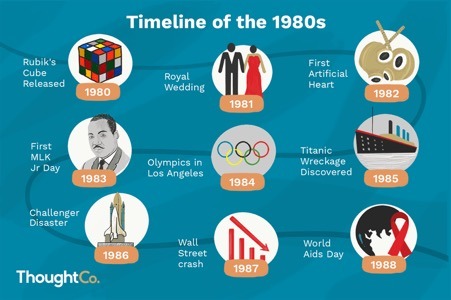
Photography and photographers in the 1980’s
Equipment:
The 80s were a peak time in photography. 35mm cameras were just starting to shift from predominantly mechanical devices into slightly more advanced machines. Having micro-electronic systems at the heart of a camera became the new normal and that made photography easier; new features progressed from more accurate shutter control to program full auto-exposure, to multi-segment light metering systems, to automatic reading of ASA/ISO codes, to integrated motors for advancing and rewinding, and finally AutoFocus (although AF didn’t truly come into its own until the next decade). The dominant manufacturers at the time are sometimes referred to as the ‘Big Five’: Canon, Minolta, Nikon, Olympus, and Pentax. These brands produced the majority of 80s cameras and are now classic models.
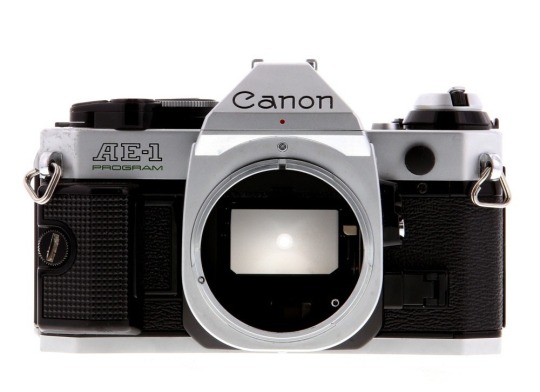
CANON AE-1 PROGRAM
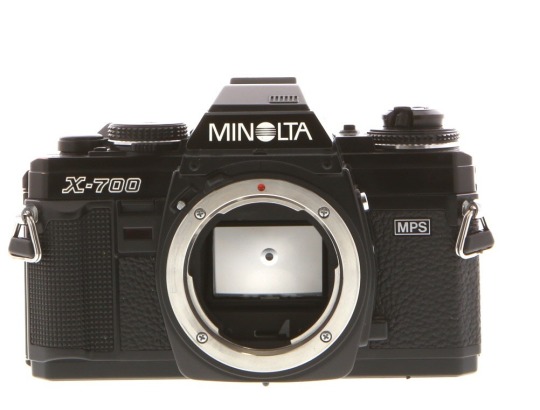
MINOLTA X-700
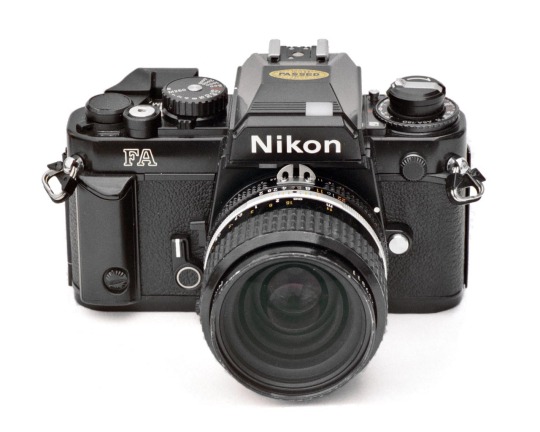
NIKON FA
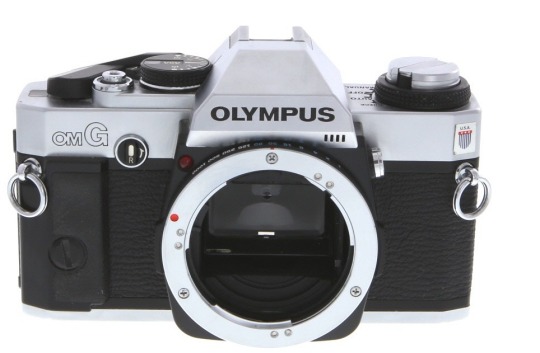
Olympus OMG
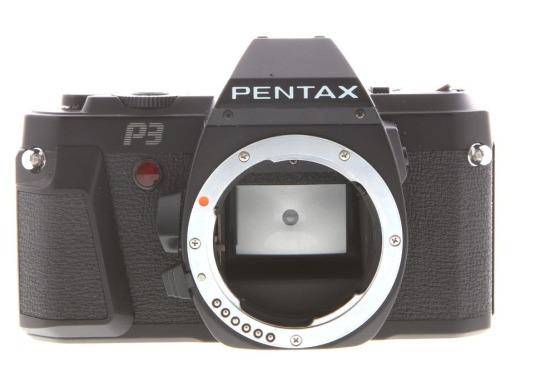
Pentax P3
Source: https://www.keh.com/blog/thats-so-80s-cameras-from-the-1980s/
Photographers:
An American perspective of 80′s photography...
“In the ’80s, new wave and hip hop exploded, graffitied subway cars and gritty nightclubs colored New York City, and John Hughes’s tales of teenage angst like Sixteen Candles (1984) and The Breakfast Club (1985) seized the big screen. Meanwhile, an energized, punk-infused youth culture developed within the context of the ongoing sexual liberation that began in the ’60s, the AIDS epidemic, and the conservative leadership of President Ronald Reagan and British Prime Minister Margaret Thatcher. Below are eight photographers who captured the decade’s young people in all their vibrant individuality.”
Source: https://www.artsy.net/article/artsy-editorial-photographers-captured-rebellious-youth-80s
Richard Corman
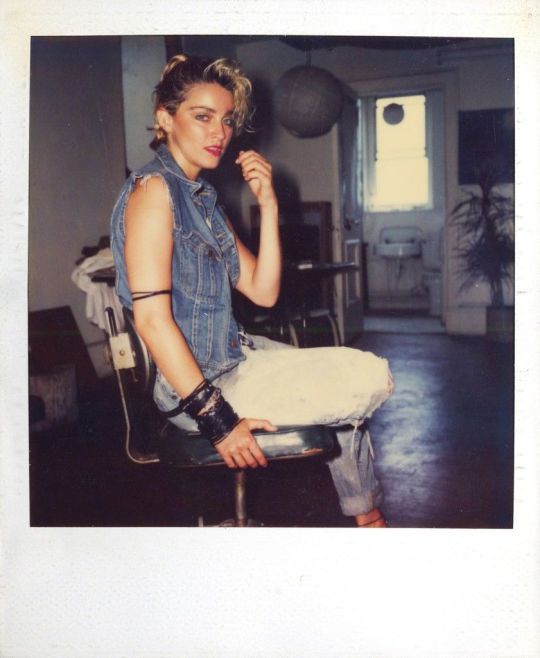
Madonna, Polaroid 4, Milk Gallery
A very British perspective on 80′s street photography...
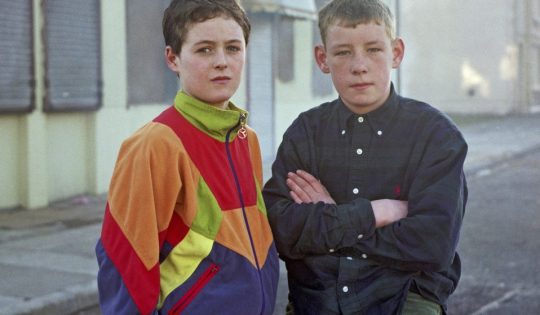
Rob Bremner, Liverpool
The 1980’s are widely regarded as Liverpool’s lowest ebb. A time when work in the city was scarce, alienation from the rest of the country was peaking, and newfangled drugs were tightening their grip on the city’s housing estates.
During this period Rob Bremner, 54 – then a shaggy-haired student from Wick, Scotland – was photographing the region’s inner-city wards, as they came to terms with a Conservative government whose policies appeared to deliberately degrade them.
Source: https://www.huckmag.com/art-and-culture/photography-2/back-in-the-day-photos-of-liverpool-in-the-80s/
The other end of the spectrum - high glamour fashion photography...
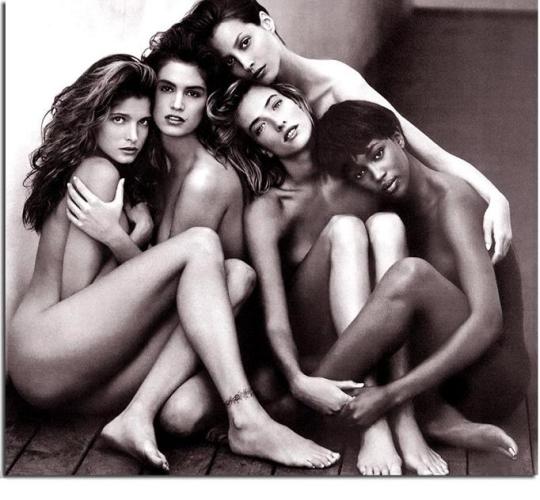
Stephanie,Cindy,Christy,Tatjana & Naomi photographed by Herb Ritts (1989)
“While some of the most creative fashion photography of the 1980s continued to be produced by 'old-timers' like Richard Avedon - see, for instance, his narrative advertising campaign "The Diors,"or his nude shot of Nastassja Kinski entwined with a snake - younger photographers also emerged into the limelight, including: Herb Ritts (1952-2002), best-known for his iconic shot of "Stephanie, Cindy, Christy, Tatjana, Naomi, Hollywood, 1989" which appeared in Rolling Stone Magazine; Bruce Weber (b.1946) who presented a new outlook on masculinity through his photo-shoots for Armani and Calvin Klein, as did Robert Mapplethorpe (1946-89) with his homoerotic shots; and Gian Paolo Barbieri (b.1938), noted for his work for fashion designers Armani, Versace, Dolce & Gabbana, Pomellato, and Giuseppe Zanotti. At the same time, women's independence was emphasized in various settings, by photographers like Denis Piel (b.1944) and Bert Stern (1929-2013).
Controversy, always a handy tool with which to boost flagging commercial fortunes, reared its head as a result of Benetton's fashion campaign, shot by Oliviero Toscani (b.1942). Images included one of a patient dying of AIDS in front of grieving relatives, while others incorporated references to racism, war, religion and the death penalty.
The leading supermodels of 1980s fashion photography included: Gia Marie Carangi, Ines de la Fressange, Cheryl Tiegs, Christie Brinkley, Paulina Porizkova, Brooke Shields, Heather Locklear, Carol Alt, and Elle Macpherson, among others. It was during this decade that supermodels stopped being seen as individuals and started to be regarded as images, just like movie stars. Witness the celebrity party shots taken by fashion photographer Roxanne Lowit (b.1965) of supermodels like Elle Macpherson, Naomi Campbell and others.”
Source: http://www.visual-arts-cork.com/photography/fashion.htm#eighties
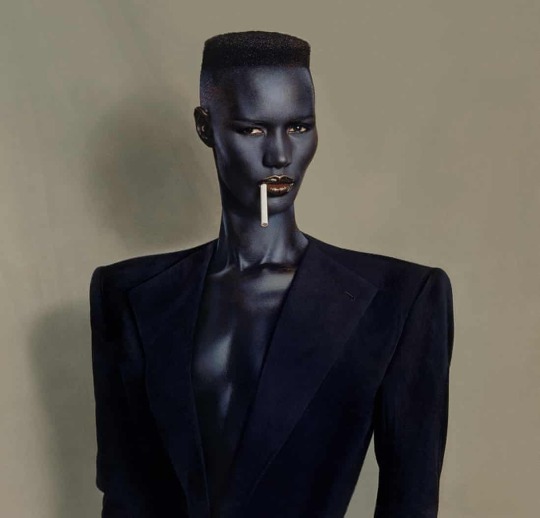
Grace Jones, Jean-Paul Goude, New York (1981)
“I wanted to focus on Grace’s masculinity – to use what other people thought an embarrassment, and turn it around to her advantage. I wanted to create – with her, of course – a new character. It went beyond just a haircut, it was an attitude. It was new and strong and ambiguous. You didn’t know if it was a man trying to be a girl or a girl trying to be a man. It was a revolution. I remember the A&R guys at Island saying, “Are you fucking crazy? This is never going to work.” And of course it did.”
Source: https://www.theguardian.com/artanddesign/2018/aug/01/jean-paul-goude-best-photograph-grace-jones-nightclubbing
4 notes
·
View notes